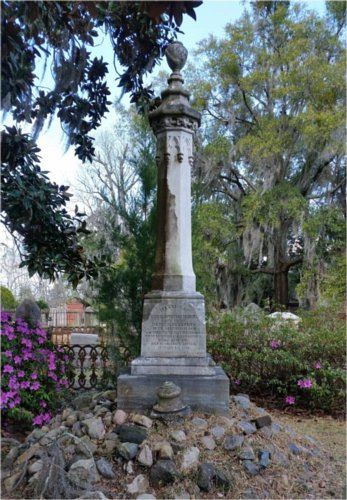Family History: John Macpherson Berrien

Youth and Early Career
John Macpherson Berrien (1781-1856) was born at Rockingham, his grandmother's home in New Jersey. As a youth, he attended Erasmus Hall in Flatbush, New York. Berrien subsequently graduated from Princeton University at the age of 15. He studied law under Joseph Clay, Jr., a distinguished attorney in Savannah.
Berrien was admitted to the bar and began his legal practice in 1799. He served as a judge on the Eastern Judicial Circuit from 1810 to 1820. In his legal practice, he argued a number of cases before the US Supreme Court, including the infamous Antelope slave ship case of 1825, where he faced off against opposing attorney Francis Scott Key.
Given Berrien's reputation for eloquence, Chief Justice John Marshall dubbed him "the honey-tongued orator." However, after a long career in the US Senate, the eloquent Berrien was more broadly hailed as "America's Cicero."

Politics
In the 1820s, Berrien turned his sights increasingly to politics. After serving in the Georgia State Senate, Berrien served in the US Senate from 1825 to 1829, and later from 1841 to 1852, as Chairman of the Committee of the Judiciary. In 1829, President Andrew Jackson chose Berrien as his Attorney General; however, Berrien only served until 1831. Berrien resigned, along with a large portion of the Cabinet, over Jackson's discontent with the refusal of his Cabinet members and their wives to socialize with Secretary of War John Eaton, and his wife Peggy, owing to scandalous circumstances prior to their marriage. Such political fallout was of no import to Berrien, who changed party affiliation several times: originally a Federalist, he served under Democrat Andrew Jackson, later identified as a Whig and ended his carreer supporting the American Party. Berrien Street in Savannah and Berrien Counties in Georgia and Michigan are named after him.


The Years at the Berrien House
In 1822 John Macpherson Berrien acquired the house in Savannah from Richard Richardson, the creditor of William Stephens, who had purchased the house from Major John Berrien when he moved to Louisville in 1797. Berrien died in the house in 1856.
While living in Savannah, Berrien was a member of the Society of the Cincinnati in the State of Georgia, Solomon's Lodge and the Independent Presbyterian Church. He was also a member of the Georgia Hussars, a volunteer Savannah cavalry unit, having served as a colonel in that group during the War of 1812. Berrien's grave is in Laurel Grove Cemetery, Savannah.
John Macpherson Berrien's first wife, Eliza Anciaux (1786-1828), was a cousin as well as the daughter of a French officer who fought under Rochambeau in the American Revolution. Together they had eight children. His second wife, whom he married in 1833, was Eliza Cecil Hunter (1810-1852), and they had seven children. Contemporaries described Berrien as having a severe demeanor in public, but warm and loving to his family and friends.